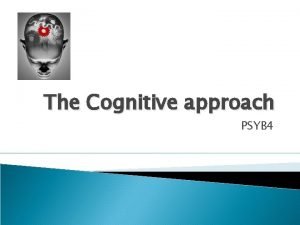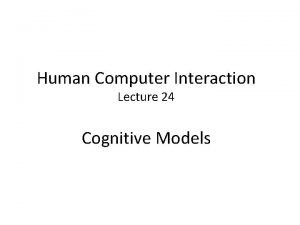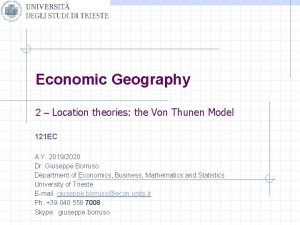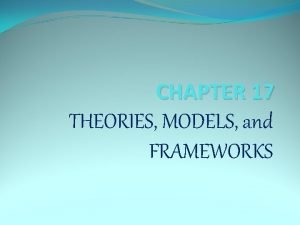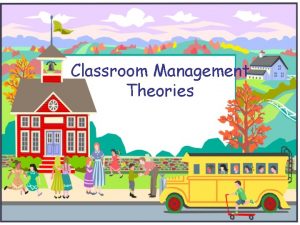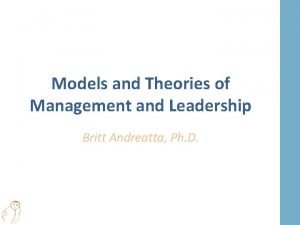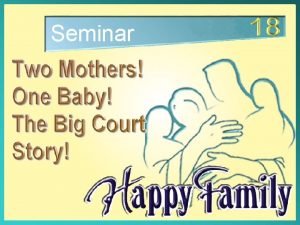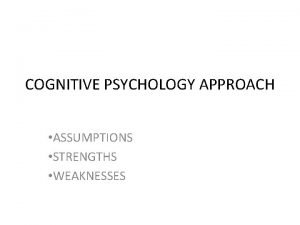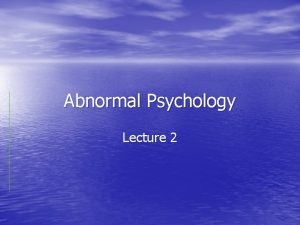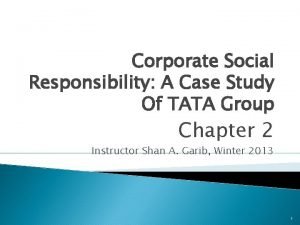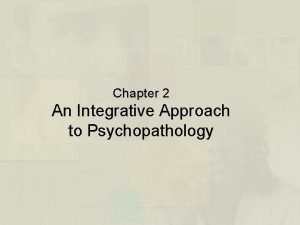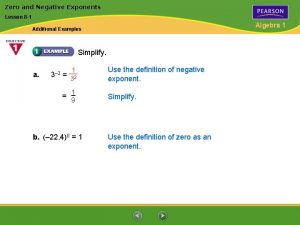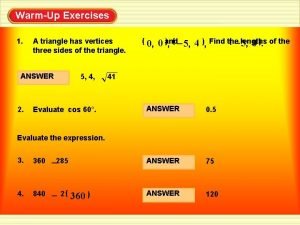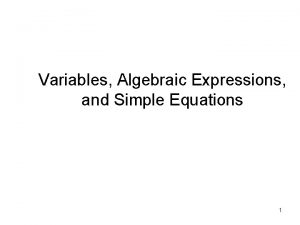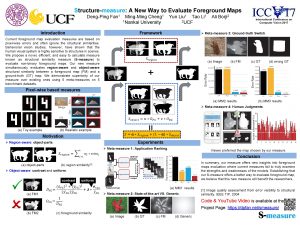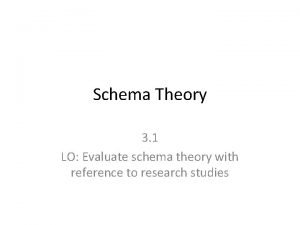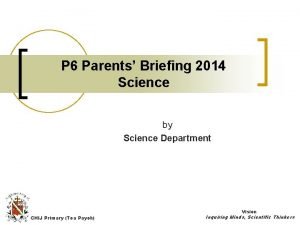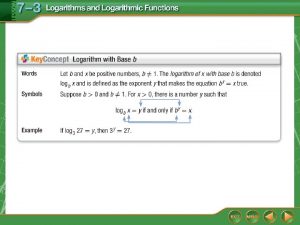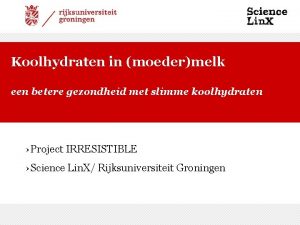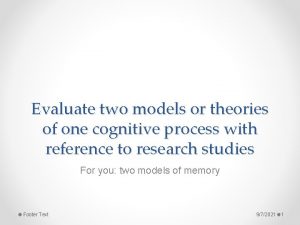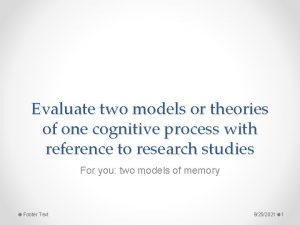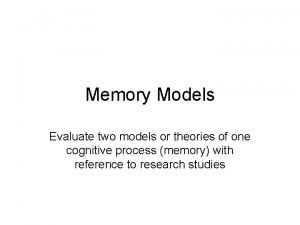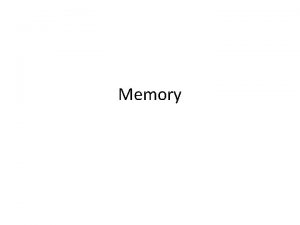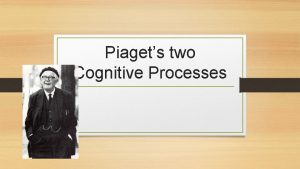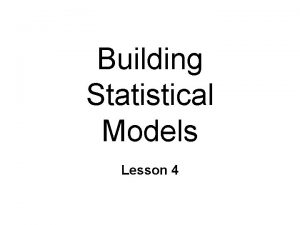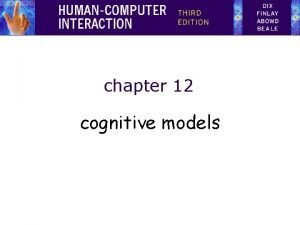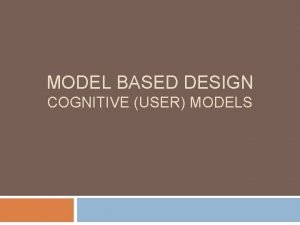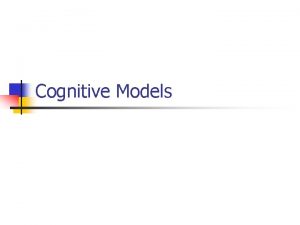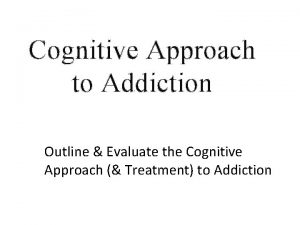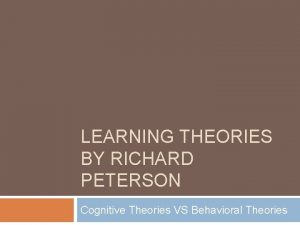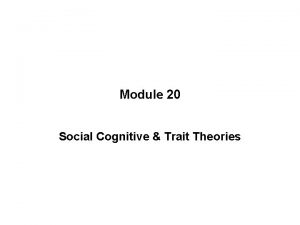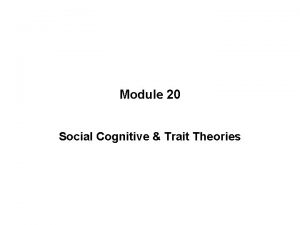Evaluate two models or theories of one cognitive




































- Slides: 36

Evaluate two models or theories of one cognitive process with reference to research studies. We will be focusing on two models of memory.

Memory Evaluate two models or theories of one cognitive process with reference to research studies.

The Multi-Store Model of Memory Atkinson and Shiffrin 1968 Evaluate two models or theories of one cognitive process with reference to research studies.

The Multi-Store Model of Memory Atkinson and Shiffrin 1968 Three step process…. 1. Encoding: The processing of information into the memory system. 2. Storage: The retention of encoded material over time. 3. Retrieval: The process of getting the information out of memory storage. Evaluate two models or theories of one cognitive process with reference to research studies.

The Multi-Store Model of Memory Atkinson and Shiffrin 1968 Evaluate two models or theories of one cognitive process with reference to research studies.

Sensory Memory • A split second holding tank for ALL sensory information. • Sperling’s research on Iconic Memory • Echoic Memory Evaluate two models or theories of one cognitive process with reference to research studies.

Short Term Memory • The stuff we encode from the sensory goes to STM. • Events are encoded visually, acoustically or semantically. • Holds about 7 (plus or minus 2) items for about 6 -15 seconds. • We recall digits better than letters. Evaluate two models or theories of one cognitive process with reference to research studies.

Evaluate two models or theories of one cognitive process with reference to research studies. Memory • Multi-Store Model 1. Sensory 2. Short Term (STM) 3. Long Term (LTM)

Have you ever encoded a penny?

The Ways we can encode information from STM to LTM… • Visual Encoding: the encoding of picture images. • Acoustic Encoding: the encoding of sound, especially the sounds of words. • Semantic Encoding: the encoding of meaning. Evaluate two models or theories of one cognitive process with reference to research studies. What are the most efficient ways to encode information into LTM.

Techniques to encode information from STM to LTM…. • Rehearsal • It involves repeating information over and over in order to get the information processed and stored as a memory Evaluate two models or theories of one cognitive process with reference to research studies. What are the most efficient ways to encode information into LTM.

Chunking • Organizing items into familiar, manageable units. 1 -4 -9 -2 -1 -7 -7 -6 -1 -8 -1 -2 -1 -9 -4 -1 XIBMSATMTVPHDX Evaluate two models or theories of one cognitive process with reference to research studies. What are the most efficient ways to encode information into LTM.

Mnemonic Devices • is any learning technique that aids information retention. Evaluate two models or theories of one cognitive process with reference to research studies. • "Mary Very Easily Makes Jam Saturday Unless No Plums. " • Please Excuse My Dear Aunt Sally • Will A Jolly Man Make A Jolly Visitor? • May I have a large container of coffee? What are the most efficient ways to encode information into LTM.

Long Term Memory • Unlimited storehouse of information. • Explicit (declarative) memories • Implicit (nondeclarative) memories Evaluate two models or theories of one cognitive process with reference to research studies.

Explicit Memories • Episodic Memories • Semantic Memories Evaluate two models or theories of one cognitive process with reference to research studies.

Implicit Memories • Procedural Memories • Conditioned Memories Evaluate two models or theories of one cognitive process with reference to research studies.

The Multi-Store Model of Memory Atkinson and Shiffrin 1968 Evaluate two models or theories of one cognitive process with reference to research studies.

Forgetting Getting a new bus number and forgetting old bus number. • Retroactive Interference: new information blocks out old information. • Proactive Interference: old information blocks out new information. Evaluate two models or theories of one cognitive process with reference to research studies. Calling your new girlfriend by old girlfriends name.

Spacing Effect • DO NOT CRAM!!!!!! • Ebbinghaus’s Forgetting Curve

Encoding Information • Primacy Effect • Recency Effect • Serial Positioning Effect

Glanzer and Cunitz 1966 Aim: • To investigate recency effect in free recall. Procedure: • This was a laboratory experiment where participants first heard a list of items and them immediately had to recall them in any order.

Glanzer and Cunitz 1966 Results: • Participants recalled words from the beginning of the list and end of the list best. • The results showed a U shaped curve.

Glanzer and Cunitz 1966 • If the participants were given a filler task (something to do) right after the last words, the primacy effect disappeared but the recency effect remained. Why? • Maybe the words are still active in STM.

Case study example of Multi-Store Model • Amnesia is caused by • H. M. could store damage to hippocampus implicit memories but and related networks. not explicit memories. • MRI scans showed that • This shows that the H. M. had severe damage to memory system hippocampus which is contains different critical to store info in LTM. systems.

Evaluate two models or theories of one cognitive process with reference to research studies.

Model 2: The Working Model of Memory Baddeley and Hitch 1974 • Main argument was that Short Term Memory in the Multi. Store Model was much too simple (too passive). • They replaced STM with something they called Working Memory.

The Working Model of Memory Baddeley and Hitch 1974 • Working Memory does not just sit there and take information. • Instead of all information going into one single store, there are different systems for different types of information.

The Working Model of Memory Baddeley and Hitch 1974 • The Working Memory consisted of three main sections.

The Working Model of Memory Baddeley and Hitch 1974 The Central Executive • Drives the whole system (e. g. the boss of working memory) and allocates data to the subsystems. • Like the Fat Controller from Thomas the Tank Engine. • Sends info to the other “slave” systems.

The Working Model of Memory Baddeley and Hitch 1974 The Phonological Loop • Handles verbal and auditory information. • Divided into two parts – Articulatory control process (inner voice) Linked to speech production. Used to rehearse and store verbal information from the phonological store. – Phonological Store (inner ear) Linked to speech perception Holds information in speech-based form (i. e. spoken words) for 1 -2 seconds.

The Working Model of Memory Baddeley and Hitch 1974 The Visuo-Spatial Sketch Pad • (inner eye) • This is believed to hold visual information. • The eyes are used to store and manipulate visual and spatial information such as remembering colors or shapes. • Also used for navigation.

The Working Model of Memory Baddeley and Hitch 1974

Evidence that the WMM is the real deal. • The WMM helps explain real life problems. Like why we cannot process written and verbal information at the same time. • PET scans show evidence of separate components of STM as different areas are activated during different tasks.

A study that proved the Working Model of Memory Quinn and Mc. Connel (1996) • They asked participants to memorize a list of words by using either imagery or rehearsal. • The task was performed on its own or with a concurrent visual noise (changing patterns of dots) or a concurrent verbal noise (speech in a foreign language).

Quinn and Mc. Connel (1996) • The results showed that learning by imagery was not affected by a concurrent verbal task • but was disturbed by a concurrent visual task. • The opposite was found in the rehearsal condition.

Quinn and Mc. Connel (1996) • This indicates that imagery processing uses the Visuo. Spatial Sketch Pad whereas verbal processing uses the Phonological Loop. • If the two tasks used the same component, performance deteriorated. • The study this lends support to different “slave” systems of memory.
 Essay cognitive psychology
Essay cognitive psychology Structure of twelfth night
Structure of twelfth night Cognitive and non cognitive religious language
Cognitive and non cognitive religious language Klm examples hci
Klm examples hci Nursing leadership theories and styles
Nursing leadership theories and styles Von thunens theory
Von thunens theory Nursing informatics theories, models and frameworks
Nursing informatics theories, models and frameworks Rimland theroy
Rimland theroy Kounin modeli
Kounin modeli Management models and theories
Management models and theories Difference between modals and semi modals
Difference between modals and semi modals One god one empire one religion
One god one empire one religion One one little dog run
One one little dog run One king one law one faith
One king one law one faith One empire one god one emperor
One empire one god one emperor Ford one plan
Ford one plan See one do one teach one
See one do one teach one See one, do one, teach one
See one, do one, teach one Studiendekanat uni bonn
Studiendekanat uni bonn Asean tourism strategic plan
Asean tourism strategic plan Graphic organizer with the aims of la liga filipina
Graphic organizer with the aims of la liga filipina One baby and two mothers story
One baby and two mothers story Disadvantages of cognitive approach
Disadvantages of cognitive approach One-dimensional vs multidimensional models
One-dimensional vs multidimensional models Classification of social responsibility
Classification of social responsibility Dr inanch mehmet
Dr inanch mehmet Zero negative exponents
Zero negative exponents Wjec criminology unit 4 advanced information
Wjec criminology unit 4 advanced information Evaluate cos(60 degrees )
Evaluate cos(60 degrees ) Does evaluate mean solve
Does evaluate mean solve Structure-measure: a new way to evaluate foreground maps
Structure-measure: a new way to evaluate foreground maps Evaluate schema theory
Evaluate schema theory Strengths of schema theory
Strengths of schema theory Evaluate the following prefix expression:
Evaluate the following prefix expression: Engage explore explain elaborate evaluate
Engage explore explain elaborate evaluate Write the expression 53 125 in logarithmic form
Write the expression 53 125 in logarithmic form Engage explore explain elaborate evaluate
Engage explore explain elaborate evaluate
